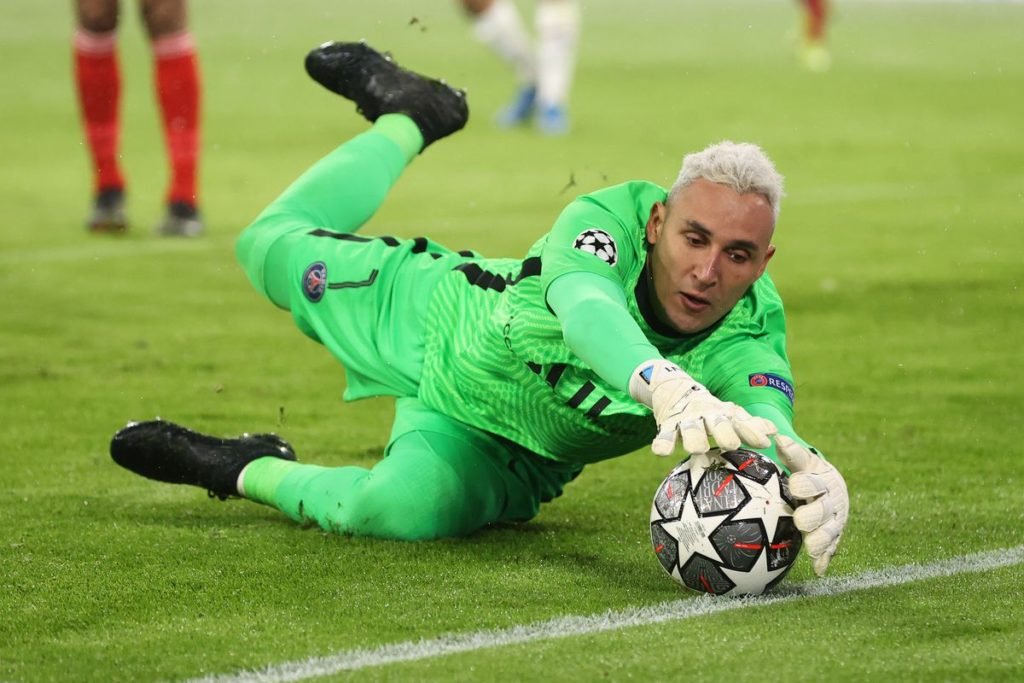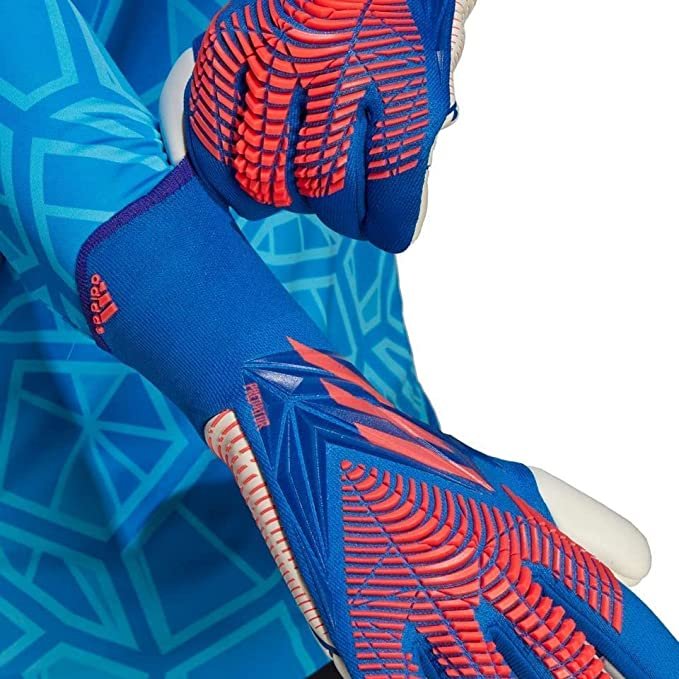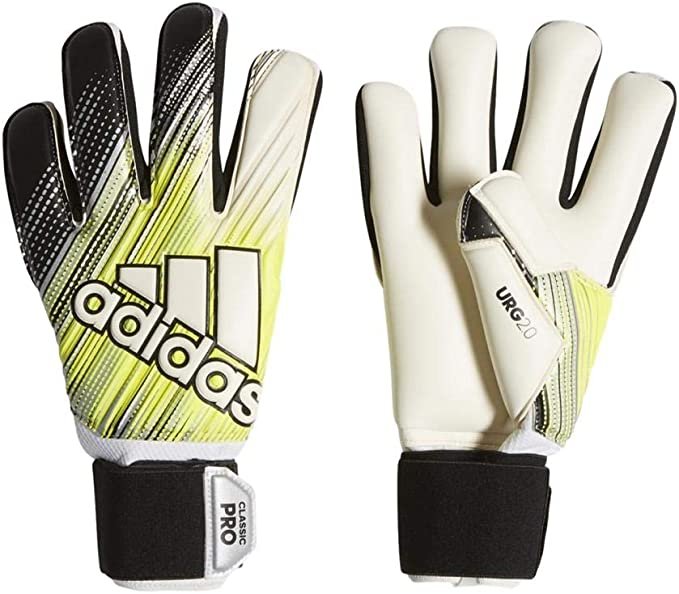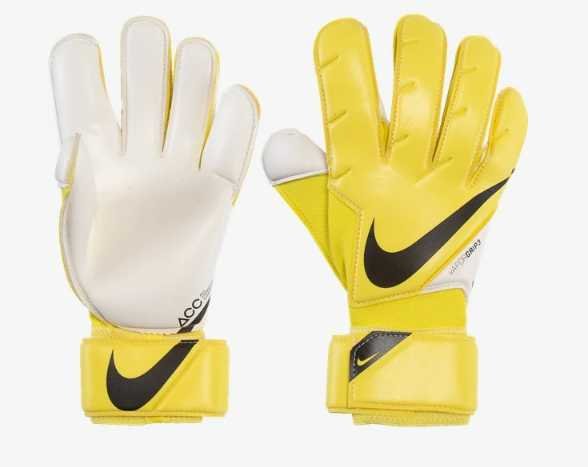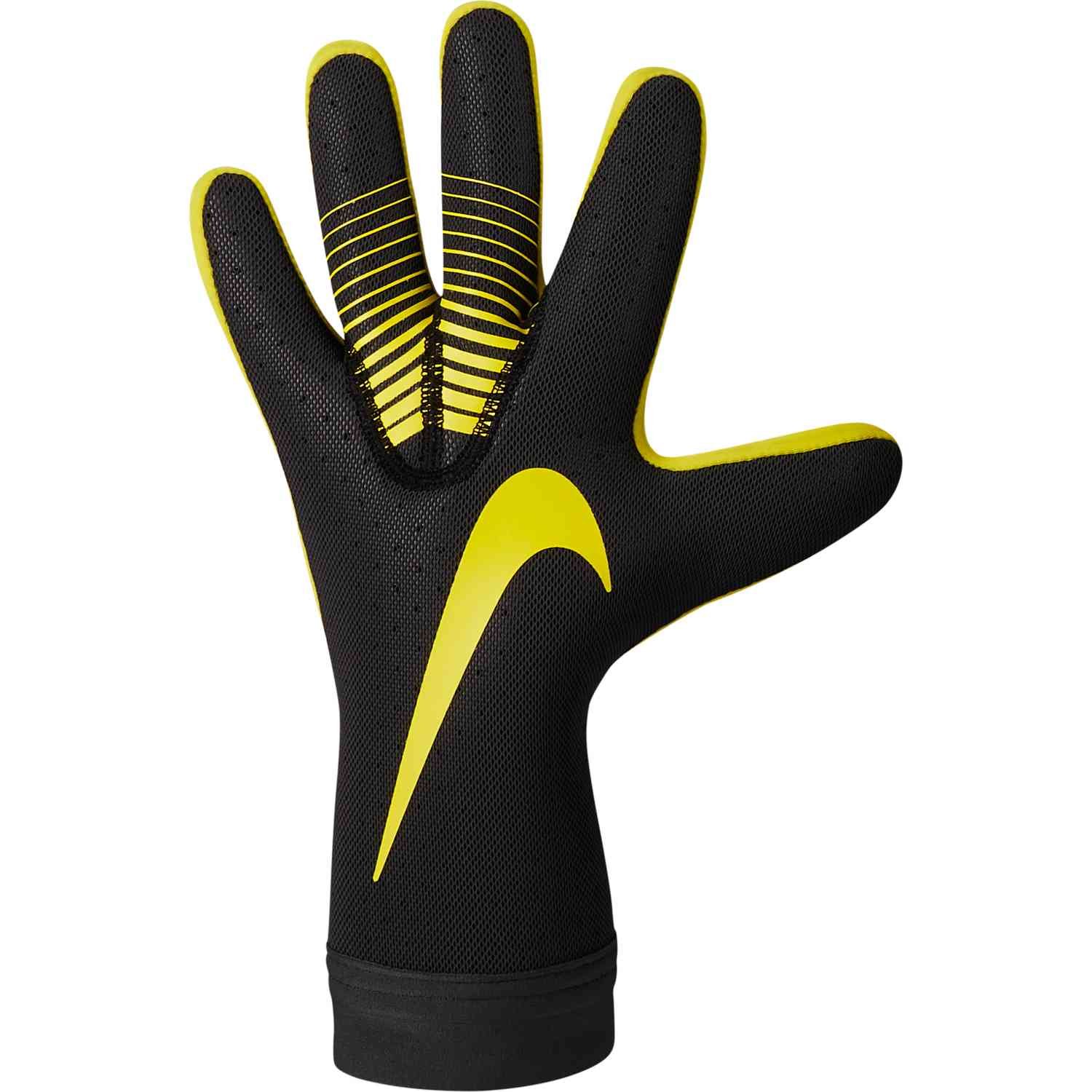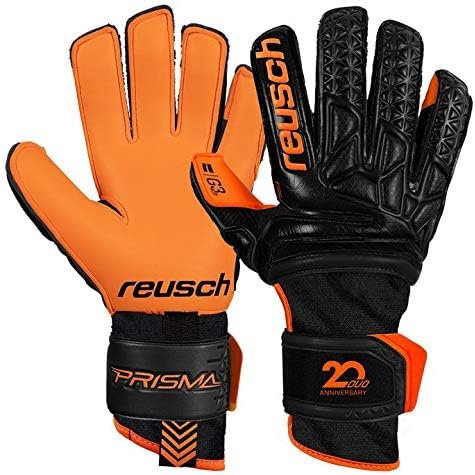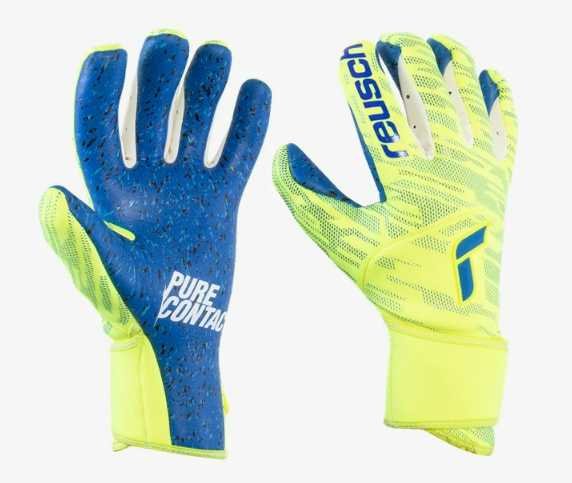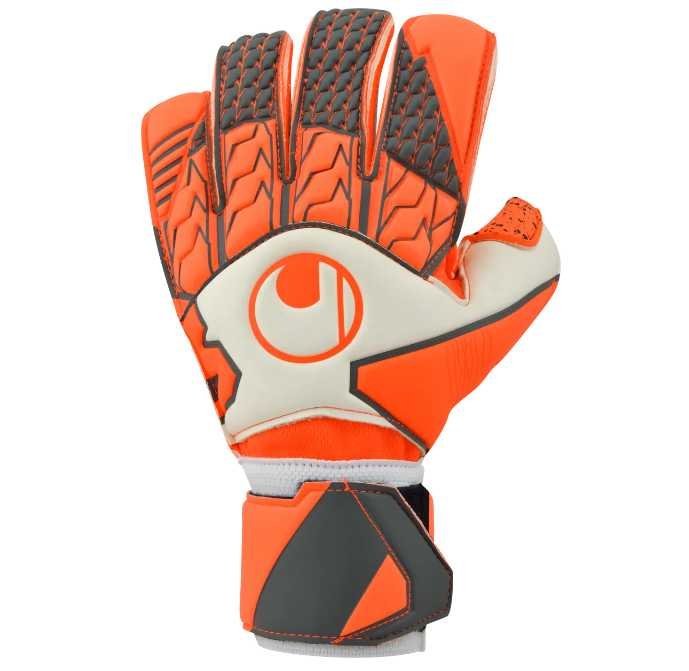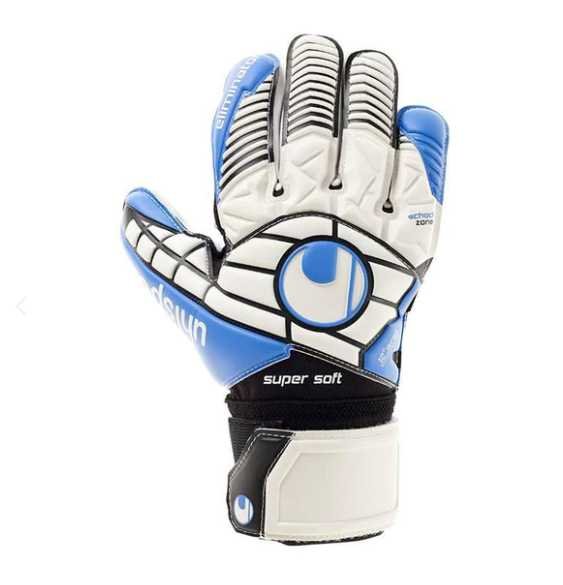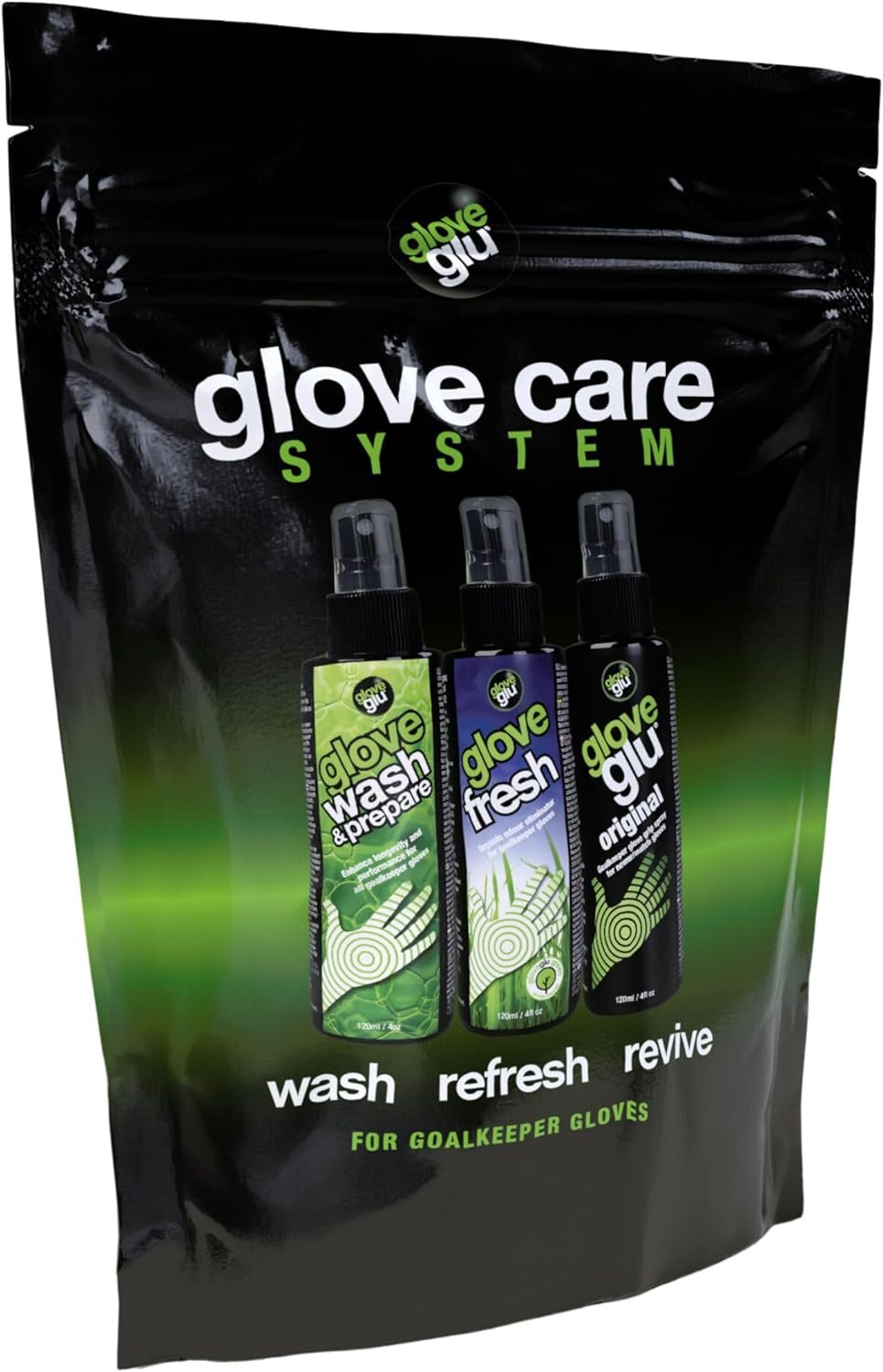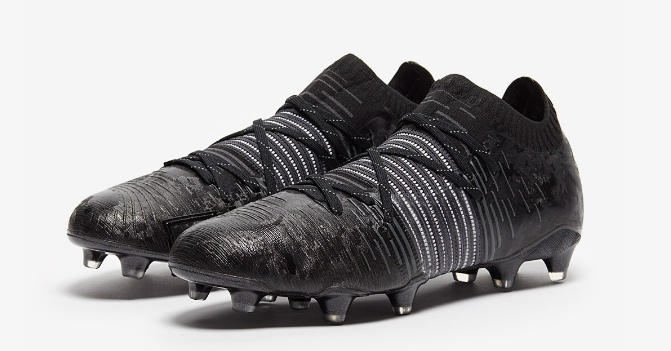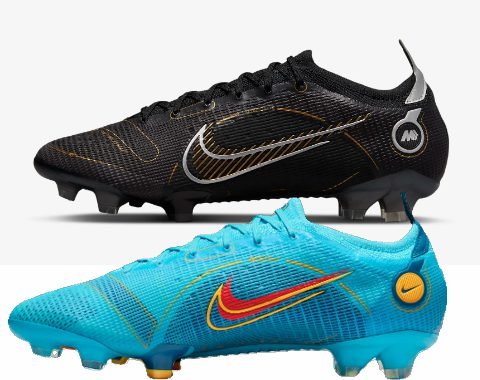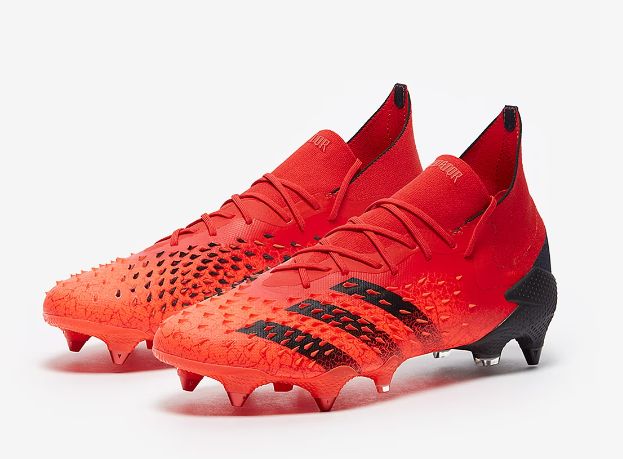The Complete Soccer Goalie Gloves Guide: Everything You Need to Know
We may earn a commission on any purchases made through Affiliate links. As an Amazon Associate we earn from qualifying purchases.
Keylor Navas
Welcome to our comprehensive guide about soccer goalie gloves, your ultimate resource for understanding the intricacies of these essential goalkeeping tools. As a goalkeeper's crucial companion, these gloves act as the deciding factor between an epic save and a disappointing goal. Made with precise engineering for superior grip, comfort, and utmost protection, goalie gloves empower goalkeepers to become the defensive stalwarts they aspire to be.
In this guide, we will delve deep into the world of soccer goalie gloves, exploring everything from glove materials and types of cuts to care and maintenance tips. We aim to equip you with all the information you need to choose the right goalie gloves, understand their evolution, and appreciate the role of technology in their continuous development.
Whether you're an aspiring goalkeeper seeking to improve your game, a coach wanting to guide your team better, a soccer parent making informed purchases for your child, or simply a soccer enthusiast hungry for knowledge, this guide is a one-stop resource for you. By understanding soccer goalie gloves, you can step up your game, make more informed decisions, and gain a deeper appreciation for the sport. So, let's get the ball rolling and start this insightful journey into the world of soccer goalie gloves.
History of Soccer Goalie Gloves
The history of soccer goalie gloves is an intriguing tale of innovation, born out of necessity and refined over decades of gameplay.
A. Evolution of Soccer Goalie Gloves
In the early years of soccer, goalkeepers played bare-handed. Gloves were not considered a necessary part of a goalkeeper's gear. This was partly due to the fact that early balls were much lighter and less harmful to bare hands.
The first recorded instance of a goalkeeper wearing gloves dates back to the late 19th century, but they were more of a protection against the cold rather than a means to enhance performance. These gloves had little in common with the specialized equipment we see today.
It wasn't until the mid-20th century that goalie gloves became a standard part of a goalkeeper's kit. As soccer balls became heavier and shots more powerful, the necessity for gloves increased. The first gloves were rudimentary, made from materials like leather and cotton with minimal padding.
Over time, advancements in materials science led to the introduction of latex, which significantly improved the gloves' grip and cushioning. This marked a turning point in the design of goalie gloves.
In the 1970s and 1980s, brands began to compete, leading to a rapid evolution in glove technology. Foam padding, improved finger protection, and custom cuts became prevalent. Today, goalie gloves are highly specialized equipment, designed with various types of foam for grip, diverse cuts for fit, and advanced features for finger protection and comfort.
B. Impact on the Game
The evolution of goalie gloves has had a significant impact on the sport of soccer. With improved gloves, goalkeepers can now make more saves, catching balls that would otherwise have been too difficult to handle. This has led to more exciting gameplay and a greater emphasis on skill and strategy in scoring goals.
Goalie gloves have also helped reduce hand and finger injuries among goalkeepers, enhancing their longevity in the sport and allowing them to perform at their best.
The history of soccer goalie gloves is a testament to the sport's constant evolution and the relentless pursuit of performance improvement. From humble beginnings to high-tech designs, these gloves have shaped the role of the goalkeeper and continue to do so in today's fast-paced, competitive game.
Anatomy of Soccer Goalie Gloves
Understanding the anatomy of soccer goalie gloves is crucial for goalkeepers at all levels. Each component serves a specific function, and knowing these can greatly aid in performance and protection.
A. Materials
Latex: The majority of goalie gloves use latex in the palm area. Latex is chosen for its excellent grip and cushioning properties, which are critical in ensuring that goalkeepers can catch and hold onto the ball effectively. The quality of latex can vary significantly, with higher-grade latex providing superior grip and durability.
Synthetic Materials: Synthetic materials such as polyester, nylon, or polyurethane are often used in other parts of the glove. These materials provide flexibility and durability, essential for the backhand of the glove and other areas that require structural integrity but not necessarily grip.
B. Parts of the Glove
Backhand: This part of the glove covers the back of the hand and offers protection when punching the ball. It's usually made from a combination of latex and synthetic materials to provide a balance of protection, flexibility, and comfort.
Palm: The palm of the glove, typically made of latex, is crucial for providing grip. Its quality often determines the glove's effectiveness in catching and controlling the ball.
Fingers: The fingers are a vital part of the glove. They are often designed with specific features like finger spines for protection and reinforcement, or gussets for added grip.
Wrist Closure: The wrist closure secures the glove on the hand. It often includes an elastic band and a strap for adjustable fit and extra support.
C. Types of Cuts
Flat Palm Cut: This traditional cut provides a looser fit and a larger contact area with the ball. It features external seams that give the glove a flat and wide look.
Roll Finger Cut: This cut provides a snug fit and a large foam contact area with the ball. The backhand is connected directly to the palm, and the latex envelops the fingers, giving the glove a rolled appearance.
Negative Cut: In this design, the seams are stitched on the inside of the glove, leading to a tighter fit. It's favored by goalkeepers who prefer a closer feel of the ball.
Hybrid Cut: This is a combination of the different cuts, utilizing the best features of each to provide a balance of grip, control, and comfort.
Understanding the anatomy of goalie gloves can help goalkeepers make an informed decision when choosing the right pair to fit their needs and preferences. It's about striking a balance between comfort, grip, protection, and of course, personal style.
How to Choose the Right Goalie Gloves
Choosing the right pair of soccer goalie gloves is crucial to every goalkeeper's game. This section of our comprehensive guide will provide valuable insights on what to consider when making your selection, helping you to enhance your performance and protect your hands.
A. Size and Fitting Guide
Size matters when it comes to goalie gloves. An improper fit can lead to poor performance and potential injuries. Measure your hand accurately, taking into account both length and breadth, then match your measurements with the manufacturer's size guide. Remember, the fit can vary between different brands and even different models within the same brand.
B. Importance of Glove Grip
The grip of a goalie glove is pivotal in ensuring efficient ball control. Higher quality latex generally provides better grip, but may wear out more quickly. It's important to strike a balance between grip and durability based on your playing conditions and personal preferences.
C. Weather Conditions and Their Impact
Weather conditions can have a significant impact on the performance of goalie gloves. Some gloves are designed specifically for certain weather conditions - for instance, 'aqua' gloves for wet conditions, which provide superior grip even when soaked.
D. Durability vs. Grip: Striking a Balance
While grip is essential, the durability of your gloves also matters, especially if you're playing regularly or on rough surfaces. Gloves with thicker latex might offer less grip than those with thinner, softer latex, but they will generally last longer.
E. Budget Considerations
Finally, consider your budget. While higher-end gloves often provide better grip, durability, and comfort, they also come with a heftier price tag. Assess your needs and the frequency of play before making a choice.
Choosing the right pair of soccer goalie gloves is about more than just picking a pair off the shelf; it requires a good understanding of your needs, preferences, and playing conditions. By considering these factors, you can make an informed decision that will enhance your game and provide necessary protection for your hands. This guide is here to assist you in making that perfect choice. So, keep these points in mind as you gear up to make those game-changing saves!
Care and Maintenance of Soccer Goalie Gloves
Caring for your soccer goalie gloves is as crucial as choosing the right pair. Proper maintenance can extend their lifespan, preserve the grip, and keep them in top shape for those game-winning saves. Here's a detailed guide on the care and maintenance of soccer goalie gloves, ensuring they serve you effectively and longer.
A. Cleaning Process
Regular cleaning is key to keeping your goalie gloves in prime condition. Here's a step-by-step guide:
Initial Rinse: Rinse the gloves under lukewarm water to remove the initial dirt and grime. Avoid using hot water as it can damage the latex.
Applying Glove Wash: Use a specialized glove wash solution to clean the gloves. Apply the solution on the gloves, focusing on the palm area which comes into contact with the ball.
Manual Cleaning: Gently rub the gloves together to dislodge any embedded dirt. For stubborn spots, you can use a soft toothbrush, but avoid scrubbing too hard as it can wear out the latex.
Rinse Off: Rinse the gloves thoroughly under lukewarm water until all the soap is removed.
Air Dry: Pat the gloves with a towel to remove excess water, then let them air dry naturally. Keep them out of direct sunlight and away from heat sources to prevent the latex from drying out and cracking.
B. Storage
Proper storage of goalie gloves can significantly impact their lifespan:
Dry Before Storing: Make sure the gloves are completely dry before you store them. Damp gloves can develop unpleasant odors and become a breeding ground for bacteria.
Avoid Sunlight and Heat: Store the gloves in a cool, dry place away from direct sunlight and heat sources.
Use a Glove Bag: A glove bag can provide protection and help maintain the shape of the gloves.
C. Routine Checks and Repair
Regularly check your gloves for any signs of wear and tear. Small rips and tears can be repaired with latex repair glue or needle and thread for fabric parts. It's better to fix small issues before they become bigger problems.
The care and maintenance of soccer goalie gloves might seem like a chore, but it's an essential part of being a goalkeeper. By dedicating a little time to cleaning, storing, and checking your gloves, you can enjoy a better grip, a comfortable fit, and extended glove life, enabling you to focus on what really matters - making those game-changing saves. Your gloves are your trusty sidekick; take good care of them, and they'll take good care of you.
Most Popular Brands and Models of Soccer Goalie Gloves
When it comes to selecting soccer goalie gloves, understanding the top brands and their standout models can make your decision-making process much easier. This section will highlight some of the most popular brands and models in the goalie glove market, offering insights to help you make an informed choice.
A. adidas
A stalwart in the world of soccer, adidas offers a range of goalie gloves renowned for their quality, performance, and style:
adidas Predator Pro: Known for its exceptional grip, the Predator Pro features a URG 2.0 latex for grip and cushioning, and a negative cut for a snug fit.
adidas Classic Pro: A favorite among professionals, the Classic Pro pairs comfort with performance. It features a smooth latex palm that offers good grip, cushioning, and durability in all weather conditions.
B. Nike
Nike, another leading name in the soccer gear industry, provides reliable and innovative goalie gloves:
Nike Vapor Grip3: The Vapor Grip3 features Grip3 technology for enhanced control, a wraparound wristband for an adjustable, secure fit, and a ventilated design to keep hands cool.
Nike Mercurial Touch Elite: Known for its minimalist design, this model has a reverse-stitched gusset wrap for a snug fit and a foam cushioning system for enhanced grip and shock absorption.
C. Reusch
A specialist in goalie gloves, Reusch's models emphasize grip, durability, and comfort:
Reusch Prisma Pro G3: With G3 Ultra Soft foam, the Prisma Pro G3 offers excellent grip and control in various weather conditions. The dual rolled expanse cut ESS maximizes the catching area of the glove.
Reusch Pure Contact: This model boasts a direct contact construction for perfect fit and a Pro latex foam palm for superior grip.
D. Uhlsport
Uhlsport, widely respected in the goalkeeper community, offers gloves designed specifically for high performance:
Uhlsport Eliminator Absolutgrip: This glove features Absolutgrip foam for enhanced cushioning and outstanding grip, and a classic cut for a maximized catching area.
Uhlsport Aerored Supergrip: With its Supergrip foam for superior grip and 3D embossed latex backhand for protection, this model is a top choice among professionals.
By familiarizing yourself with these popular brands and models of soccer goalie gloves, you can make a more informed decision that aligns with your needs and preferences. Whether you're just starting out or you're a seasoned goalkeeper, finding the right gloves is an essential step in your soccer journey. Use this guide as a tool to explore the dynamic world of goalie gloves and elevate your game to new heights.
Goalie Gloves for Youth Players: What to Look For
When choosing goalie gloves for youth players, different factors come into play. Young goalkeepers require gloves that offer protection, comfort, and fit, all while accommodating their growth and development. This guide will delve into the key considerations when selecting soccer goalie gloves for youth players, helping you equip your young champions with the right gear for their game.
A. Importance of Proper Fit
A proper fit is paramount when selecting goalie gloves for youth players. Gloves that are too big can lead to insufficient grip and control, while those that are too small can restrict movement and flexibility. Measure your young goalkeeper's hand accurately and compare it with the brand's sizing chart to ensure a good fit.
B. Durability for Regular Use
Young players often play on a variety of surfaces, so durability is a critical consideration. Look for gloves with good quality latex and sturdy stitching that can withstand regular use.
C. Protection for Growing Hands
Young hands are still growing, making them more susceptible to injuries. Gloves with protective features, such as finger spines and padded backhands, can provide extra support and safety.
D. Ease of Use
Consider how easy the gloves are to put on and take off. For young players, gloves with a simple closure system can make their experience more enjoyable and hassle-free.
E. Price Considerations
Finally, consider the price. Youth players often outgrow their gloves quickly, so it may not be economical to invest in high-end models initially.
F. Popular Models for Youth Players
Reusch Fit Control SG Junior: Known for its Soft Grip foam palm, this model offers durability and a reliable grip, making it suitable for beginners and recreational youth goalkeepers.
adidas Predator Junior: With a soft grip latex palm, the Predator Junior provides good cushioning and grip, coupled with a positive cut for a comfortable fit.
Nike Match Junior: Offering Grip3 technology and a wraparound wristband, this model is an excellent choice for young goalkeepers seeking a secure, adjustable fit and enhanced ball control.
Selecting the right soccer goalie gloves for youth players is a crucial step in nurturing their budding goalkeeping skills. By focusing on the proper fit, durability, protection, ease of use, and price, you can ensure that your young players have the right gear to develop their skills and enjoy their time on the field. Let this guide assist you in making the best choice for your aspiring young goalkeeper. With the right gloves, they're already on their way to becoming the next big soccer star.
The Bottom Line
In the dynamic world of soccer, a goalkeeper's role is unparalleled, and so is the importance of their gear. Soccer goalie gloves are more than just a protective accessory - they are an extension of a goalkeeper's hands, an indispensable tool that enhances grip, provides comfort, and shields from injury.
Our comprehensive guide has aimed to navigate you through the ins and outs of soccer goalie gloves. From understanding their anatomy and function, to exploring how to choose the right pair, care for them, and appreciate the role of technology and top brands in their evolution. We've delved into specifics for youth players and advanced topics for the seasoned goalies and enthusiasts.
Selecting the perfect pair of soccer goalie gloves is a unique journey that combines personal preference, playing style, and knowledge. And this journey can profoundly impact your performance and enjoyment of the beautiful game. As you step onto the field, the right gloves can make all the difference, offering you the confidence to make those game-changing saves.
Whether you're just starting your goalkeeping journey, looking to upgrade your gear, or simply aiming to expand your understanding, we hope this guide has provided you with valuable insights. So, dive into the world of soccer goalie gloves, make informed choices, and gear up for great saves. After all, in the words of a true goalkeeper, "Every save begins with the right pair of gloves."
Continue to explore this exciting aspect of soccer with us, stay tuned for more comprehensive guides, and never stop improving your game!
Products
We may earn a commission on any purchases made through Affiliate links. As an Amazon Associate we earn from qualifying purchases.
Glove Care Kit
The ultimate glove care system, GloveGlu offers a complete solution with three products: Wash, Refresh, and Revive. Designed to maintain top-level performance for your gloves, this system helps keep them in top shape for longer.

